
The Top 10 Best Google Ads Features You’re Not Using
The Google Ads universe is forever expanding. Sure, some things get changed, demoted or taken away (like Pluto losing its planet status). But new PPC features are always being created, the latest being image extensions for search ads.
It’s therefore imperative for PPC professionals to stay on beat with the latest and greatest as their competitors will surely be the ones to try out anything new.
But what about forgotten and hidden Google Ads features that you’ve never thought of?
Here’s an extensive look into the top 10 most underutilized Google Ads features and how you can use them to your advantage.
1. Above-The-Fold CPM Bidding on the Display Network
Many studies have been produced regarding above- and below-the-fold ad placement, and it’s widely accepted that above-the-fold ad placement allows the best chance for clicks.
With all the different devices, screen sizes and resolutions, it’s never safe to bet that your ad will always show above the fold.
If you’re running a cost-per-thousand-impression (CPM) bidding campaign, then your goal might be branding, instead of direct response. So “eyeballs” is your key metric to track.
Why pay for impressions when no one will see your ad?
[MORE: See Our Facebook vs. Google Infographic]
While you’re at it, you can exclude other categories that meet your criteria. You do this by selecting your display network campaign, clicking on the display network tab, and then scrolling down to the bottom where you’ll find “exclusions.”
Then go ahead and click on “Categories” and then “Add exclusions” to the right.
2. Image Ad Creator
Have you ever used this thing? It’s incredible what it can create, and even if you’re not too hot on what it comes up with, you can use the idea to get some inspiration.
The image ad creator surely beats creating .swf files with Adobe Flash if you’ve never touched the program before.
And while it’s not the display ad builder, the image ad creator allows you to create rich media ads in different pixel dimensions in seconds.
You give it the headline, description, and a call-to-action and it’ll create several ad examples that you can use with the click of a button.
Here’s how you do it:
Click on the green “+ New ad” button within any display network ad group you have. Then click on “Image ad” and you’re ready to rock!
Here’s what it came up with for our company, KlientBoost.com:
3. +Broad +Match +Modifier
Regular broad match can be a killer for Google Ads accounts. It’s no wonder that so many people that try Google Ads for the first time see their budgets being depleted before they even blink.
Don’t get me wrong, regular broad match for keywords can be a good idea once you’ve maxed out all the other match types. But the flower shop owner who is just starting to understand Google Ads selecting the keyword flower shop, believes that her ad will show for flower shop, and not flower girl dresses.
Broad match modifier allows you to add a “+” sign to words in your keyword that must be present when a searcher types in a query. Otherwise you won’t allow your ad to show.
Why is this different and sometimes better than regular broad match?
Because it allows you to be in control and not Google. Giving Google the option to show your ads for synonyms or unrelated terms can obviously be a bad idea (and a costly one).
Here’s a breakdown on how all the match types work:
The green check mark shows what search terms will show based off the ‘werewolf novels’ keyword and the match type you select.
4. Google Ads Scripts
This might be a bit too techy for most people, but don’t let that scare you. Google Ads scripts are usually used for reporting, account alerts, and bulk changes. But they can also be used to help automate your PPC tasks.
One of the more interesting uses I’ve learned over the past few months is tracking account, campaign, and ad group quality score (QS). As of right now, you can only see quality scores at the keyword level within the Google Ads interface. With scripts, you can create a daily, weekly, or monthly report that tells you the overall account QS. Find the how-to here.
You can then use this benchmark to determine whether the changes you’re making are improving your account QS or not.
Are you getting healthier, or are you still struggling with that spare tire around your waist?
Other interesting ideas for scripts can be found here, here, and here.
Aaaanndd, if you want someone to create custom scripts for you, try out Optmyzr.
5. Auction Insights
Want to know who is bidding on your keyword, and how much better/worse they’re doing than you?
Check out the auction insights feature located within the keywords tab. Select one keyword (or multiple) by checking the check box next to it, then “Details” and “Auction insights” in the drop down.
Here’s the data overview you’ll get: A breakdown of your ad in relation to your competitors for the keyword(s) you’ve selected.
Pay close attention to all the metrics, as they’re clear indicators on how you’re doing.
6. Search Terms Report
This is a report that should almost be used on a daily basis, and if not that, weekly.
The search term report allows you to see what people have actually typed in to make your search ad appear.
You can use this data to add new keywords that you’d like to bid on, or new negatives that you’d like to exclude from your campaigns.
You find the search term report right where you found the auction insights report, in the “Details” tab within the keyword view.
You can then select “Selected” (if you have checked off one or more keywords) or “All” to see the search term report for all the keywords in your immediate view.
7. Keyword Diagnosis
Are your keywords pulling from the correct search terms, or are other keywords in your account competing with others?
Using the “Keyword diagnosis” tool allows you to do a quick health check on your keywords, and the tool will tell you if your keywords are showing, and why they aren’t.
Use this tool to eliminate internal competition between keywords and make sure the correct search ads are showing for the correct search terms.
You’ll find this feature within the same drop down as the auction insights and search term report.
8. The Home Tab
I’ll be the first to admit that the Home tab is something I often overlook.
It’s found in the green horizontal navigation bar that runs across the top of your Google Ads interface.
Within the Home tab you’ll find interesting insights like:
- Alerts and announcements (missed clicks due to budget, for example)
- Keywords below first page bid
- Good quality, but low traffic keywords
- All disabled keywords, ad groups, and campaigns
- Suggestions for increasing traffic by adding new keywords
You can make it your starting page instead of the Campaigns tab by scrolling all the way to the bottom of the page and selecting the check box on the left.
Watch for Google to continually add new modules that can be toggled on/off.
9. Google Ads Editor
Do you have tons of keywords and ads that need optimizations, but not enough time during the day?
Google Ads Editor might not exactly be a feature within Google Ads, but it’s a tool that I constantly find underutilized when it comes to making bulk changes to accounts. Some advertisers just don’t know it exists!
The Google Ads Editor allows you to make offline changes to your account, which can then be uploaded at a later time.
Some neat features include the search function and filtering, advanced bid changes (like percentage increases/decreases), and the sharing of changes with other people working on the account (by adding comments).
And with a little messing around, you could become an editor genius within one day.
You can download the editor directly from Google here.
10. Time Lag Reporting
Are you selling expensive items or services? Do you know the buying cycle of your clients and customers?
The search funnel report will tell you exactly how long it takes the average visitor to convert on your site.
If a buyer takes 7 days to complete a purchase instead of one day, then that might be a good indicator that you should start remarketing (if you’re not already).
The time lag report is only available if you’re tracking conversions. Here’s how you find it:
Go to the “Tools and Analysis” tab and then click on “Conversions.” After that, select “Search Funnels” in the bottom left-hand corner.
After that, you’ll be shown some options on the left where you can select “Time Lag.”
One interesting thing you might find is that perhaps the majority of your conversions happen within the first 24 hours from a visitor’s first impression of your ad.
But you’ll see in this screenshot below that over 7% of conversions happen after 12 days from the first impression.
That’s a great indicator that your visitors are shopping around and taking their time to pull the trigger.
In this particular scenario, you can definitely benefit from using remarketing to stay “top-of-mind” as they continue to browse.
Do you have any other underutilized Google Ads features? Share in the comments!

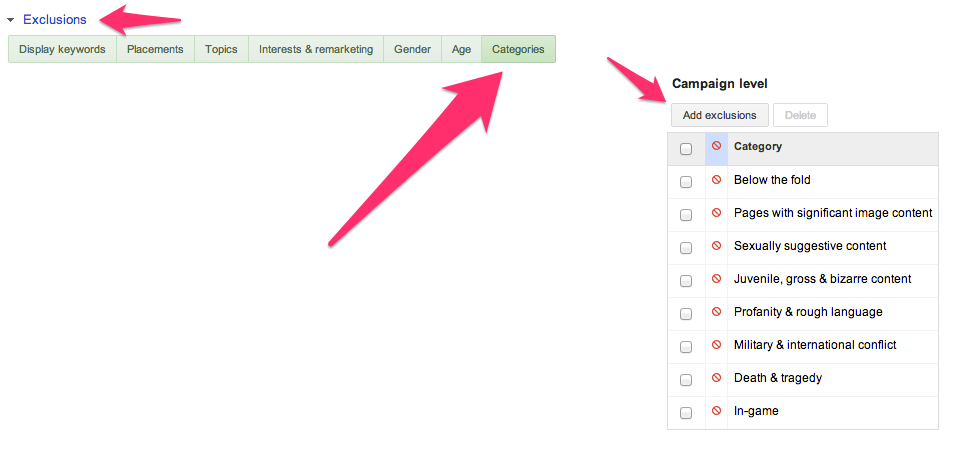



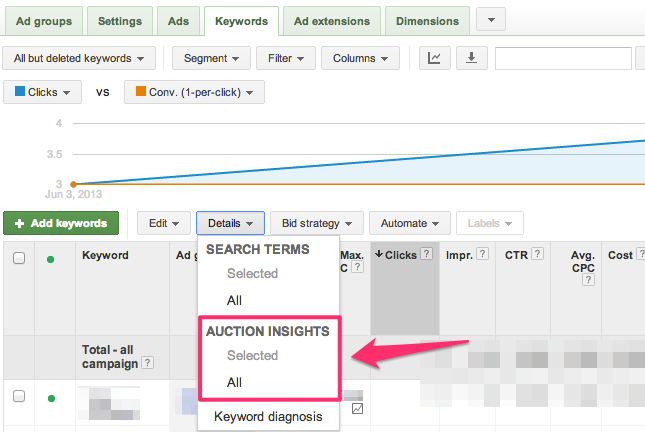
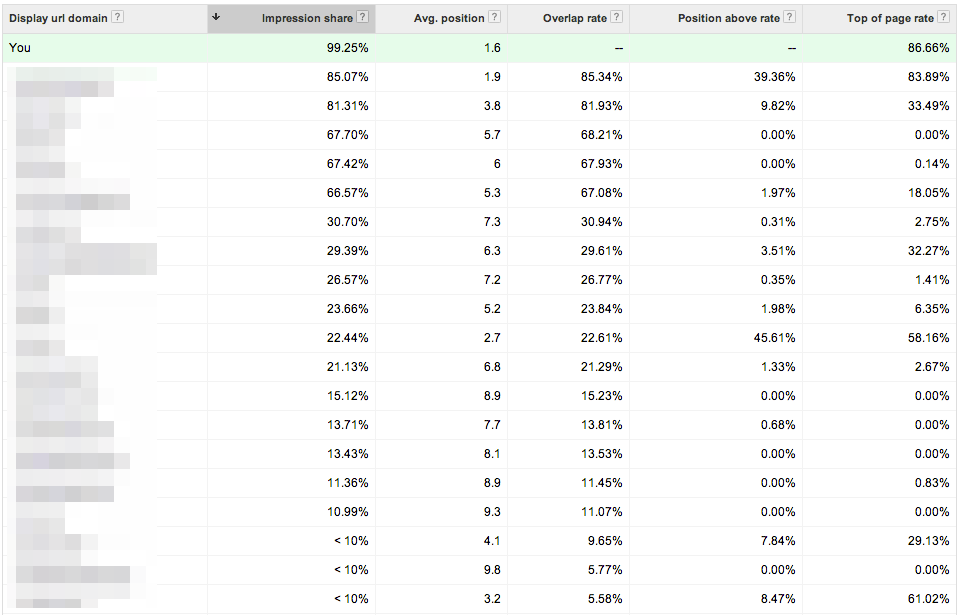



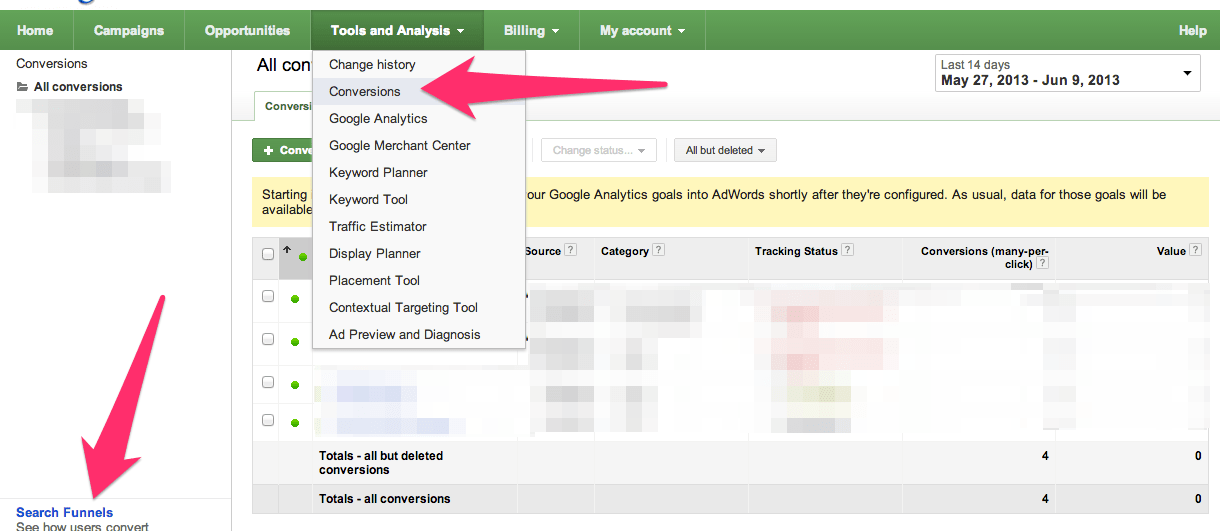
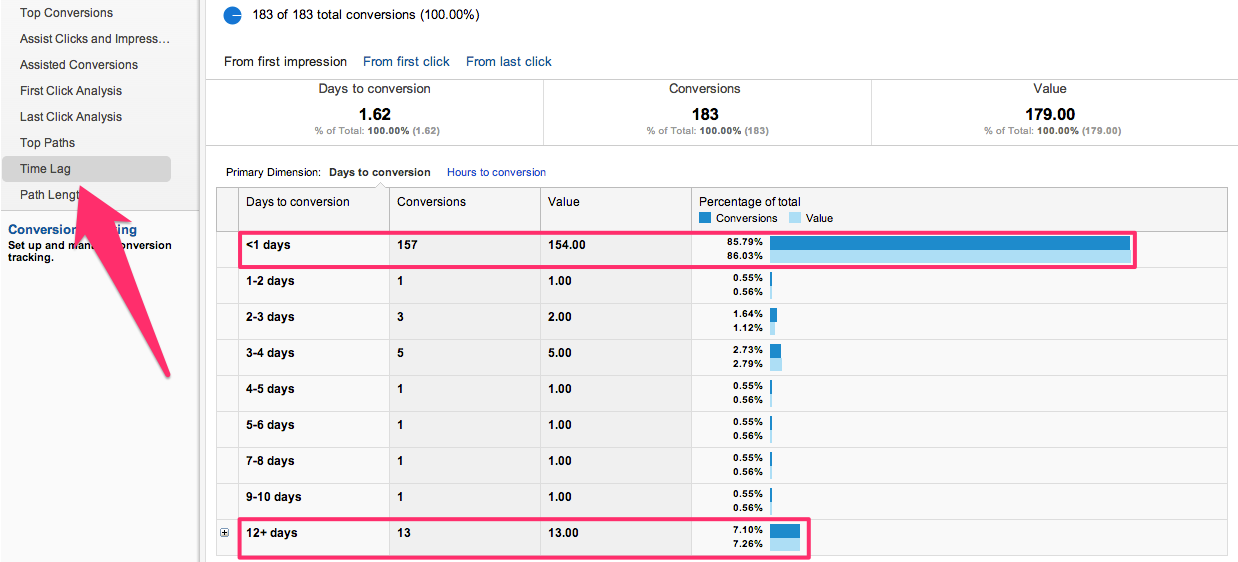








Comments
Please read our Comment Policy before commenting.